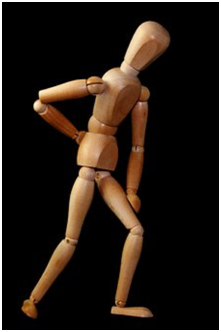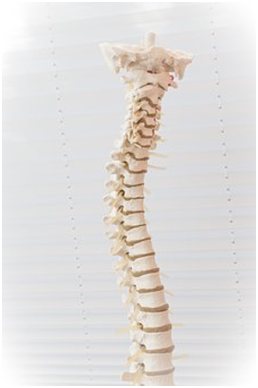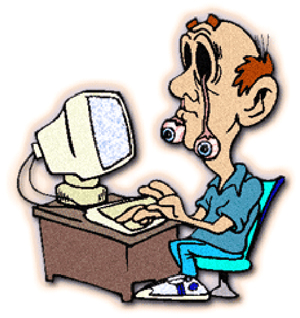By the time most of us finish our first year of work, we have been exposed to several people who complained about lower back pain. It is estimated that 80% of all adults will experience lower back pain at least once in their lives, even if only for a little while. Our backs are required to do a lot of different things, and we don’t always go about it in the best possible way.

Photo taken from https://pixabay.com/photos/figure-man-stand-back-pain-1707104/
- Straining or spraining your back (some call it overuse)
- Parts of the spine pressing on nerves
- Degenerative ailments
Some of these seem broad, but that is because sometimes it is very difficult to differentiate which is the root cause. Often it is a mixture of several causes that result in lower back pain. For example, posture is not listed as one of the top three causes, but it can definitely contribute to your back being more susceptible (if not being one of several root causes).
Be warned, most of the solutions do mean changing some of your habits. For example, to help your back, regular exercise is strongly recommended. Sitting up straight is another. You already know what you need to do, it’s just a matter of doing it. Ultimately, doing things that you find annoying now can keep you from feeling a lot of pain later.
Straining and Spraining Your Back
People usually refer to this as pulling or throwing their back out. Basically, the fact that you are constantly using your back contributes to lower back pain. This is a bit like regular wear and tear on your body. However, it is when you do things the wrong way thinking that it is alright that you are really contributing to this.
Straining your back causes muscle tears, often leading to muscle spasms. Spraining your back occurs when you over-reach and tear ligaments that connect the bones. The pain is usually minor for both of these in the beginning.

Photo taken from https://www.pexels.com/photo/man-catching-ball-1294438/
- Heavy lifting
- Sudden movements, like falling or twisting your back
- Injuries from sports or other more traumatic events
Poor posture is a contributor to this as it makes your back more susceptible to straining and spraining your back.
Pressure on Nerves
The spine has a lot of nerves running through the length of it. When the bone surrounding the nerves is hurt, swells, ruptures, or shifts, it can pinch (or put pressure) on the nerves. This usually results in severe pain that can make it difficult to move or turn.

Photo taken from https://pixabay.com/photos/spine-disc-move-2539697/
- Ruptured or herniated discs – discs are a type of cushion between your vertebrae. When the soft part of the disk rupture or bulge, they can apply pressure to the nerves. This is one of the few cases where you may not feel any pain and only find out about the problem when you are checked for something else. If you are unfortunate, it will be a debilitating pain that will prevent you from doing anything until it is fixed.
- Radiculopathy – compression or inflammation can cause discomfort to extreme pain when it occurs near the root of the spinal nerve. Some people have reported tingling sensations or numbness because of radiculopathy. Others have suffered a combination of pain, numbness, and tingling.
Properly identifying these issues typically requires visiting a hospital and have x-rays or a CAT scan done. Chiropractors can often fix these problems so that you won’t need to go in for surgery in most cases. It’s just a matter of getting the visual to see where the problem is and determining the right way to remove the pressure from the nerve.
Degenerative and Rheumatic Conditions
The biggest facilitator of back problems is time. With as much as we rely on our backs for everything, all of the components will wear down as we age. However, those who suffer from degenerative or rheumatic conditions will likely develop problems with their backs. You can certainly mitigate the problems with proper posture, regular exercise, and a healthy lifestyle, but lower back problems are still inevitable.
The following are the most common conditions that begin to show with age:
- Degenerative disc disease – loss of hydration between discs that results in herniation of the disk. It can also contribute to the condition spinal stenosis.
- Spinal stenosis – with aging, the spinal canal narrows, causing pressure and pain along the spinal cord and nerves.
- Joint inflammation – the most well-known joint inflammation condition is arthritis, but osteoarthritis and spondylitis are also conditions in this category. Spondylitis is specific to the vertebrae, causing severe or recurring pain in the lower back.
This is not a comprehensive list, but it does cover the most common degenerative or rheumatic conditions associated with lower back pain. Traumatic injuries can exacerbate or cause these problems as a person ages. Any injury that harms the back can be a trigger for pain and suffering in the later years.

Photo taken from https://pixabay.com/vectors/ache-pain-back-body-care-backache-3929184/
A healthy lifestyle is the best solution, but even it is not guaranteed to keep your back healthy. Being proactive will reduce any pain you may experience later, giving you a good reason to be careful and try to take care of your back when you are young.


 (5 votes, average: 4.00 out of 5)
(5 votes, average: 4.00 out of 5)








